We have been asked this question quite often lately so we decided to squelch the uproar and answer it simply. The long and short of it is a solid “No you can’t” but for the curious, we will do a quick rundown of the major reason why it is not to be done.
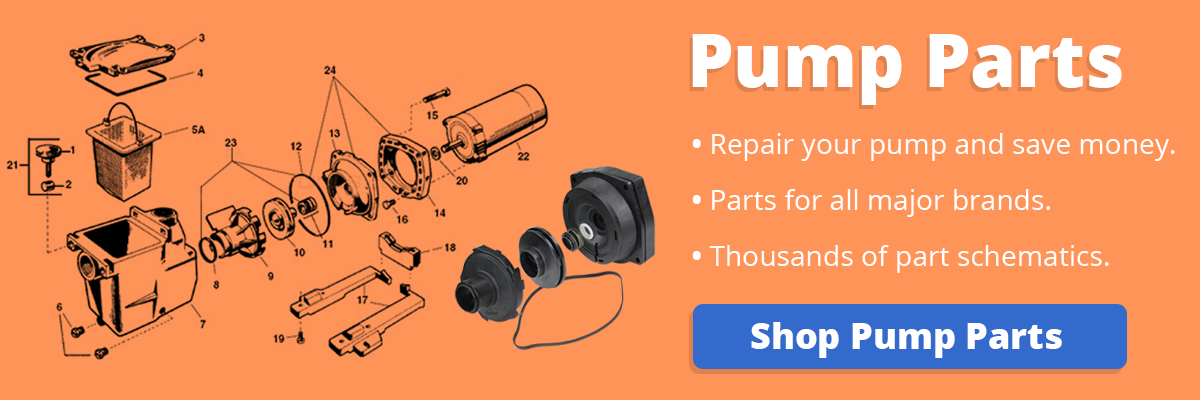
Location, Location, Location!
The main difference between the two is the pump’s likely position relative to the body of water. The placement of the pump defines the pump’s role in what it needs to do to properly circulate the water.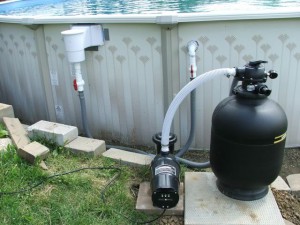
Inground pool pumps have a natural enemy named Gravity as well as air pressure working against them at all times. Water’s tendency to sink to the lowest available point is the result of gravity’s constant push on water. That phenomena is also the cause for your pipes going bone dry when you lose prime. Losing prime is comparable to when you suck on a straw to take a drink and then when you stop it goes away back into the cup. Gravity and air rush in to the straw, replacing liquid.
The ability to regain that “prime” aka water draw is what separates inground (IG) pool pumps from their above ground counterparts. IG pumps are aided in this endeavor by this dandy device called the Diffuser, pictured to the right. The diffuser is a shroud that sits over the pump’s impeller. The impeller is a vented disk screwed to the motor’s shaft tip to transform the spinning of the motor into water pulling force. The diffuser’s cone shaped shroud focuses that pulling vacuum force towards the inlet pipe, drawing the water to the pump. The addition of the diffuser is what makes inground pumps “Self-Priming,” and what keeps the pool owner from needing to fill the pump with water before every use.
On the other hand, Above Ground (AG) pool pumps are installed in the opposite manner to their counterpart, at the foot of the pool, well below the waterline. The pump should be constantly primed and ready to go because of the pump’s location. This placement permits gravity fed flow that allows for less powerful motors and the omittance of a diffuser.
But What If I Really Want to Do It?

Ok, if you want to be really difficult, there is only one way I could see it working for you but the circumstances are unlikely and highly speculative. Your “inground pool” would either need to be on a hill or have the pool equipment down hill from the pool. The sloping gradient allows for a more gravity driven priming situation which lets us use the smaller pump. Or you can find one of the few self-priming above ground pool pumps.
Now, the only issue I see with that is the return water needing to be sent back up that gradient to a return. Above ground pool pump are smaller in horsepower output and impeller size which reduces pressure greatly. When we add the back pressure of an up sloping gradient, the weight of the water may push back against the pump creating an unwanted stalemate.
My suggestion is to get the right pump for the pool and do not try to rig up something from mismatched parts; if you own an inground pool get an inground pump and if there is an above ground pool use an above ground pump. If you wish to discuss further on this topic, drop a line in the comments or feel free to give us a call at 877-372-6038.

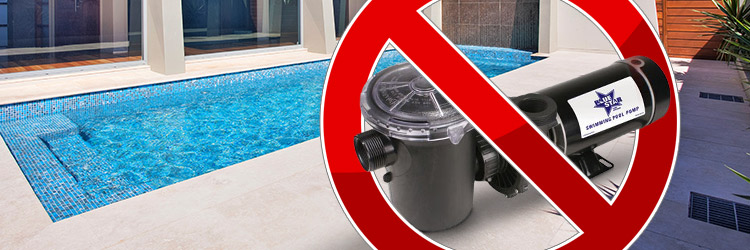
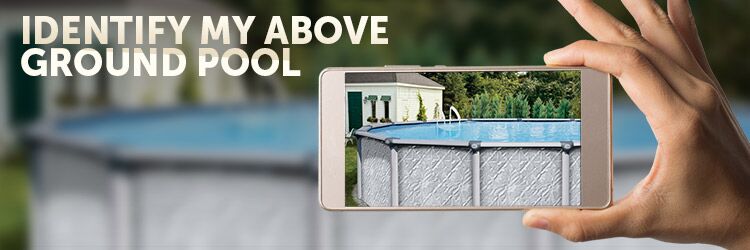
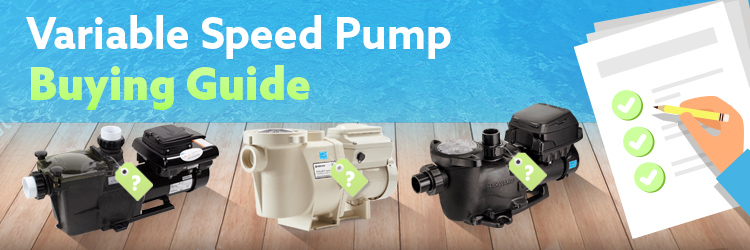
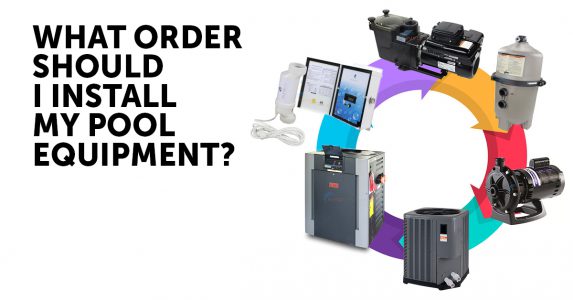
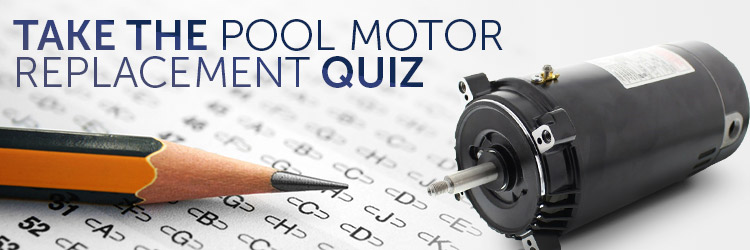






My in ground pool is actually on a hill leading down to a ravine and my pump is BELOW the pool. So, my pool is below some ground and above other ground (the ground where the pump and filter sit). Still, it was installed with an in ground pump. Maybe wasn’t necessary,
If it works fine for you, then I wouldn’t fret. It is all about finding the pool equipment that works for your application.
I have been told that a Hayward 1580SP 1hp above ground will pull up to 3′ above water level with the proper check valve. Is this true? I would like to use it as part of an external vacumn system. Thanks.
I have a question about this. I have an in-ground pool that is 9′ x 15′ x 5′ deep. We haven’t installed any equipment yet because, frankly, we ran out of funds. My question is, can I temporarily (so we can enjoy it for the summer), set up an above-ground filter & pump, drop the hose into the pool, and clean it that way. Is that possible? I appreciate your help and advice!
I just read Lonnie’s post…our issues are similar!
The article kind of covers this already, but you could do this but you would need to find a self-priming a/g pool pump.
We are doing a DYI project that is proving very difficult. We are trying to turn our coy pond into a splash pool that is in ground. We bought a intext 12X12 liner with pump which is a small above ground pool you can get at Walmart. We have dug and placed the pump below the water line. The pump is blowing out water, but not sucking it in. Trying to locate a inground pool pump for a 12×12 is almost impossible. Would love any suggestions!
I have a little 5500 litre Inground pool ..I’m left scratching my head about a pump and filter as it will be positioned just above the water level so I’ve herd above ground pool pumps and filters won’t work ..can I put non return valve in to keep it primed ..would that make a above ground pool pump work for a inground pool ..thankyou
Probably not worth it as it will give you issues until you save up and get an inground pump. You can try installing a one-way check valve somewhere in front of the pump. That may buy you some time before the inevitable.
Can you use an in ground pool pump on an above ground pool?s Is there a benefit?
Which pump shpuld we bu when the skimers are at the same level as the pump?
Hi
my pool is 11x16ft with 3.5ft deep. my pump is 3/4hp and 16 sand filter. what size pipe should i use? I have already installed a 1.5inch pipe for the drain.
Hi,
I just purchased a house that currently has a 18×33 above ground pool. I would like to add a gas heater. The pump (1.5hp) and filter is currently 100ft from the gas meter. There is a great spot for all the equipment about 10ft away from the gas meter which would save me digging and running gas through the whole yard. However the water would have to flow upwards of approximately 35″. Do i need to change to a Inground pump or could the pump handle it? Any help would be much appreciated. Thank you
Could check valves be installed on both the coming and going lines from the pump?
Yes, check valves can be installed before and after the pump. We suggest installing the check valve after the filter for easier servicing of the filter.
Can I use an above ground pump on Inground pool my pump is about 3 feet lower than the water level of the Ingrahm pool
it works with above ground pump, but i’m not satisfied.
I can’t return this pump for exchange so I’ll buy anther pump this time for inground pool I have.
Can I ask this question in reverse? Can you use a inground pool pump on an above ground pool? I am installing a technosolis solar system on my roof but its quite far away from the pool (+60 ft.) but only 10+feed in elevation. I am concerned that my 0.5 HP pump wont cut it and was looking to upgrade. I can’t find a “above ground” pool pump over 1.5 HP that will give me the proper GPM of around 45 at that distance. Its a round 27 ft above ground pool approx. 22,000 gal.
Do you have a suction line besides the skimmer line? Because 1.5 hp pulling from one pipe is going to be alot. You would have to hard pipe the system. Flex PVC can crush if suction is too strong.You may be able to use a 3/4 HP pump because the pump has such a short feet of head. But you probably want to talk to your installer to figure out the HP required for your system. They will have the advantage of being able to measure and calculate variables for you specific applicaiton.
No suction line besides the skimmer line, and my current pump is actually 1HP – Hayward SP2290. I am currently using Schedule 40 PVC for all the fittings and plan on running flex pipe from the diverter valve to the solar array underground. I am worried like what you said that a bigger pump will suck too much when the solar is off because the short feed of head.
Going by that model number that is a Hayward-Canada product. I don’t know how flex pipe is going to hold up underground in Canadian winters since we’re in Florida. You may want to talk to a builder.
Hi we bought a house with an inground tank already built in, I say tank because it was built as a swimming pool 20′ x 14′ x 4′ 6″ tiled, but with no built in plumbing at all. up until now we have been using an Intex 635T above ground filter / pump which a local firm adapted for us, it’s not ideal, and less than efficient. Unfortunately there is no way we can install below ground plumbing, and reading your advise it looks as if we are stumped, I am not sure how we improve on what we have got, except maybe to buy a bigger pump. Have you any ideas please?
Did you ever get a solution? I have an inground concrete pool as well, built by the homeowners back in the late 70’s, early 80’s. They never put in a filter system. I have no way to attach inlet/outlet hoses. I bought an above ground pool pump. Sand. My pool is up higher than my pump as the pool is higher on a hill than the rest of my yard. So my hoses are going up hill and hanging over the side of the pool, into the water, weighted down to stay under water. I cant get the water to flow into my pump! It wont prime. Any suggestions?
I have a 24″ above ground pool. I bought a 1HP pump and didn’t realize it was meant for an inground pool. Am I okay to use this for my above ground pool?
24’…not 24″
I would return it and get an above ground pool pump.
Is there a problem with installing a pump at an altitude of one meter above the pool floor? The total height of the pool is 1.5 meters. The longitudinal distance from the pool is 12 meters.
It depends on the pump model, pumps like the Pentair Dynamo and Hayward Matrix can actually prime themselves. This type of installation is suitable for self-priming pumps. if you have a lower-end pump, being installed above the waterline may not work. Refer to the owner’s manual or literature to find reference of the pump being self-priming.
i have an above ground pool with 5000 gallons in it…
i can not have inground pool for the moment… but i enjoy hightech and gadgets and i’m trying hard to make our above ground look good.
i would like to install a pentair variable 1.5HP pool pump because you can program it, auto it and play with the rpm/ gpm ofmthe pump so it could match the minimum pool heater pump requirement gpm and at the same time lower the electric bill..
but all variable speed pumps are designed for inground pool only. With so many above ground pool owner out there, how come there is no variable speed pump for us?
second question, i was told that putting an inground variable speed pump on an above ground pool can break several equipment due to the suction created by inground pump.
The thickness of the skimmer of an above ground pool is too thin to sustain the suction force, flexible pipes will also collapse, a syphon will be created in the pool, and in the skimmer.. could make the skimmer of the above ground pool noisy..
even if you set the variable speed pump to the lowest rpm, there is still a prime mode upon turning on the pump and there is still a constant suction force…
in case of a shutdown or a power outage, the variable pump could reset the setting and when the power return it will run at default 3000 rpm and full prime and full suction.. and that can destroy your above ground pool while you’re absent from home.
is there a way to mod an inground variable speed pump to disable the diffuser?
My honest question, why install a pump that can cost almost much as your pool frame? I would bite the bullet, and not have a gadgety pool pump, so you can save faster for an inground pool which would warrant a variable speed pump.
I have a 12k gal in ground pool …. in addition to my main pump I was thinking of using a wind turbine and running a continuous small pump …I was hoping for a low power pump for above ground pools… that’s cheap … also hope to use any extra power on heating elements with extra heater I have… do you have a suggestion? thanks
Unfortunately, I do not have any suggestions on wind turbines. But I do suggest heading over to TroubleFreePool.com they have a bunch of experts and DIY-ers that may be able to help you.
Really appreciate you sharing this post.Much thanks again. Fantastic.
HI
Is it a good idea to have the pump underground next to the pool at the same level of the inground pool water ?
In that case I can have an aboveground pump instead of an inground one !?
If you use an inground pool pump on an inground pool then you can have above or below the water line.
If you have one of the few applications that have a pool equipment pad below the pool then you may be able to use an above ground pool pump on an inground pool. My suggestion is to just use a pump for its intended purpose; whether it be inground or above ground.
I am a homeowner and I am building a small 3,000 gallon mini pool in my back yard. Going to basically be a glorified spa with no heater. I have built the concrete structure monolithically. I’m having a hard time finding an inground pump small enough for this application. All of the pumps small enough to run a 3,000 gallon pool are for above ground use. Any thoughts? The placement of the pump and filter area is approx 1 foot below water level due to the slope of the yard. I’m doing this project over the next few months.
My very small inground pool had a 48y frame above ground pump.
It worked for years and years; am i making a huge mistake replacing it with the same thing?
Roy you would have to provide more info on your installation. What model pump do you have? How big is the body of water? What is your filter’s size? What is the feet of head of your pool? And is the pump above or below water level?
The contractor got an underground pool installed with an aboveground optiflo pantair . Of course I did not know about it … I just found out 2 years later
Hi I am in the middle of installing my first pool. Its a bit crazy in as much is 1/2 and 1/2 AG and BG. So it’s a meter high structure from ground level to top and excavated down to 1 meter at the deep end.
Ideally for me the pump house would be built at ground level, at the shallow end, so i would have a 1 meter head of water and a 1 meter distance to the deep end.
Which type of pump should I use AG or BG, and if I was to go for a AG pump would this pump be more economical to buy and run??
BG , better go big or go home
Many people in the market for a new home shy away from backyard swimming pools, not wanting the extra maintenance costs and upkeep. It s still generally thought that homes with inground pools are worth more. However, this may not be true at all if the inground pool is really an above ground pool in disguise. At the very least, you can expect prospective buyers to have a lot of questions.
I have heard in the past that you can expect to get half of the value of an inground pool when you sell your house. For example if your house was $200K and you paid $50K for a new pool you could expect when selling your home to get and additional $25K on your home (1/2 of the $50K pool), so you would be selling for $225K. That’s why many say not to add a pool purely for investment reasons, also you can narrow the buying pool as not all buyers want a pool. With that being said I added a pool to our house and my family uses it everyday in the summer, so it has been a great investment for us!
My question, can the diffuser be bought separate and change it out from the above ground pump to convert it to a inground pump and using the same housing/pump housing? I guess I am saying is this the only difference to make it a self priming pump.
Good question, George. A diffuser can not be added to an above ground pool pump to increase its water flow. The design of a pool pump is partly based on efficiency of space which means there is no extra room to accommodate an extra piece. Also a diffuser is secured into the seal plate by screws or notches; if an above ground pump’s seal plate is altered to add on a diffuser it would compromise the pump’s watertight seal.
Another difference between these pumps are the impeller sizes. A one horsepower inground pump impeller will be larger than a one horspeower above ground pump’s because of their distinct water dynamics i.e. feet of head, rise above water level, and required water flow.
Depends on the inground pool setup.
I am running a Hayward turbo flo ii (Above ground)
13amp
1 HP
on a 14×28 50KL pool
No main drain
so circulation is purely skimmer driven which is about 10 feet away from pump ( sitting on the ground )
so really it depends on your inground setup